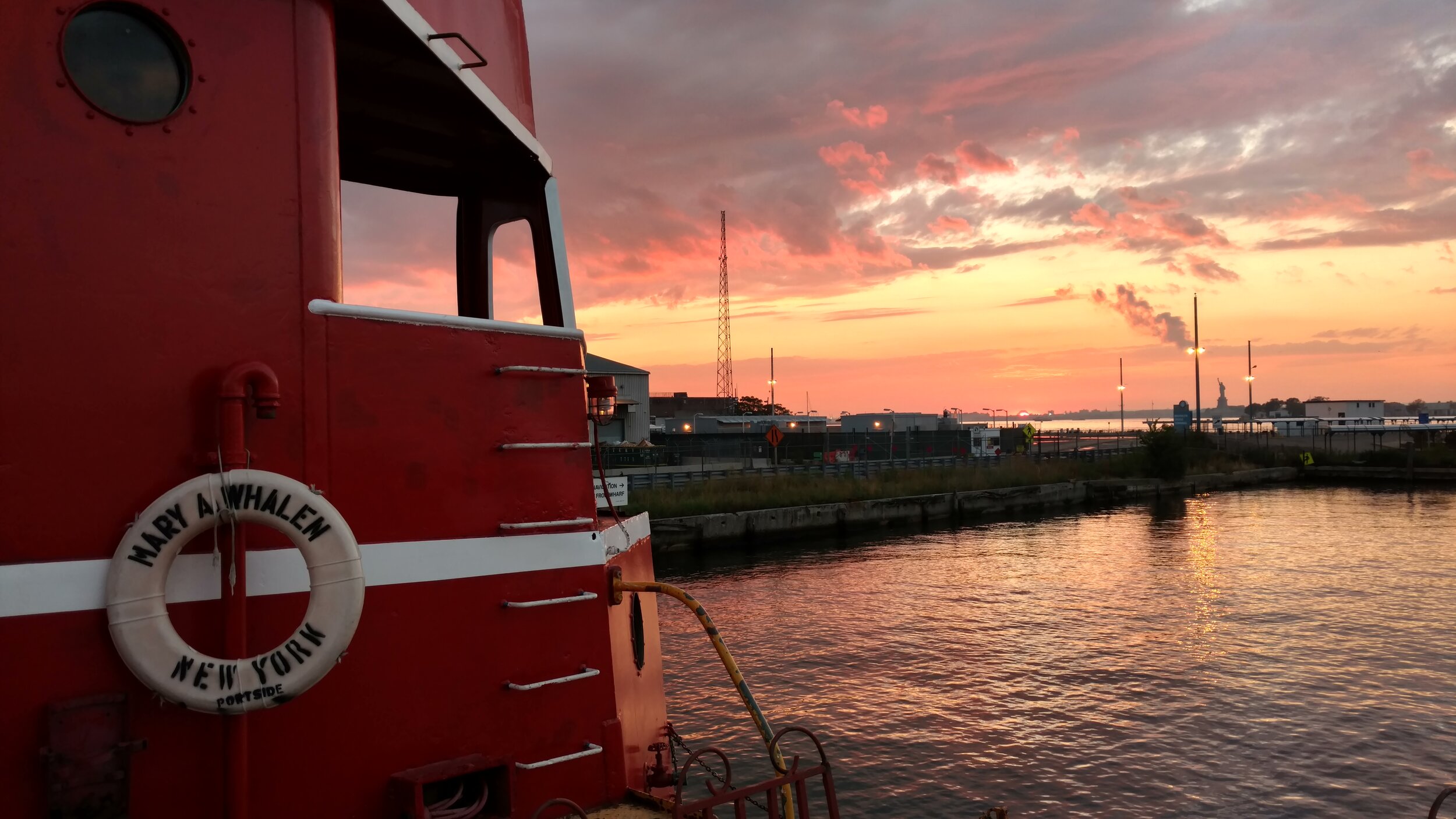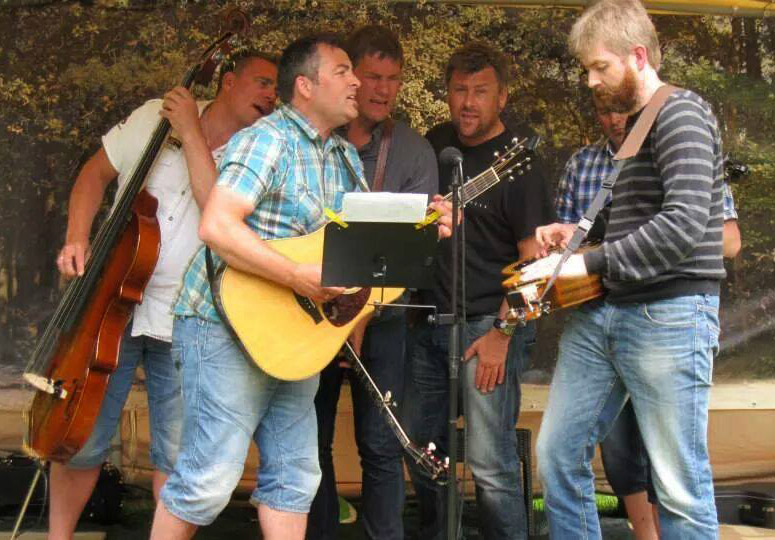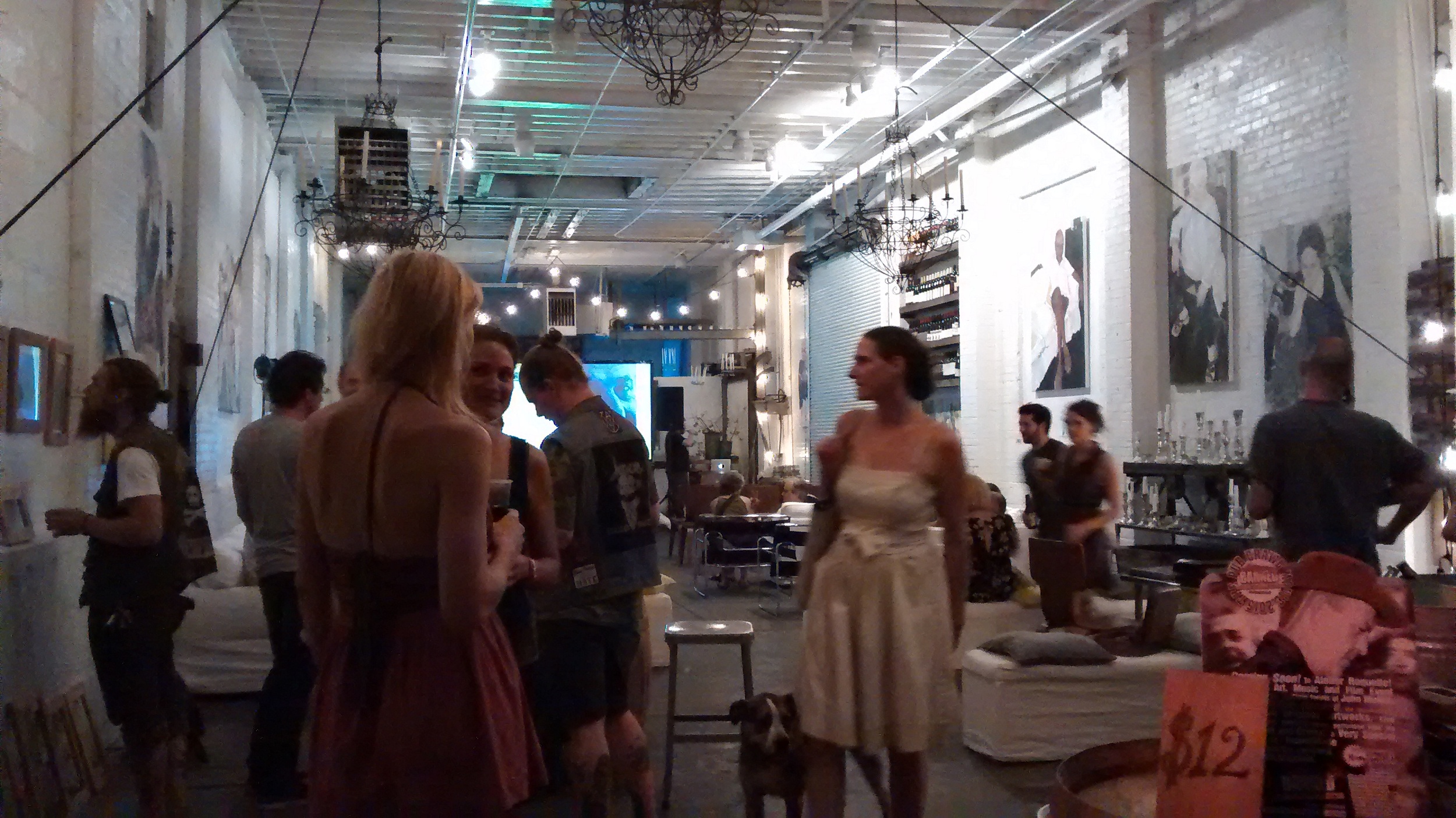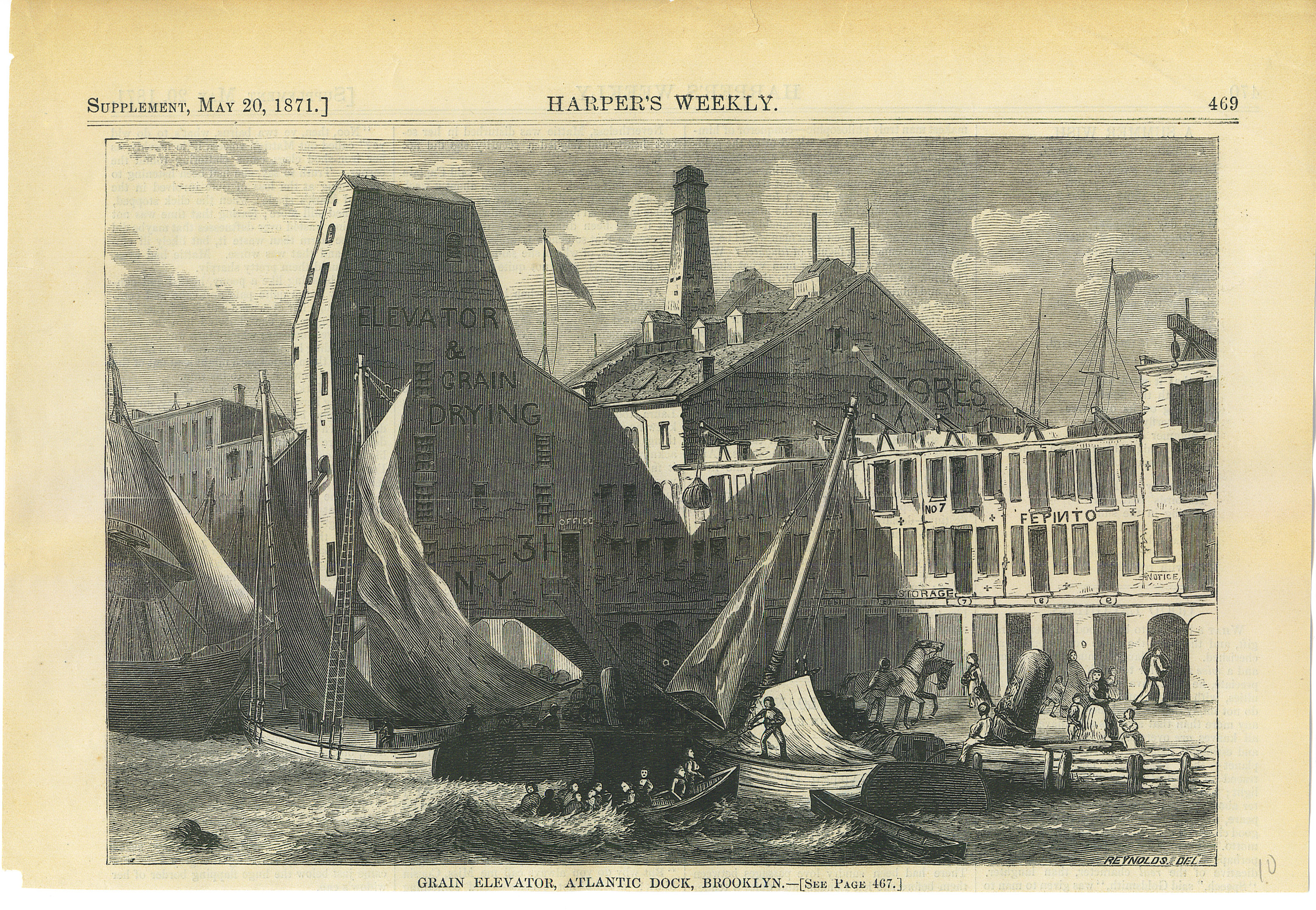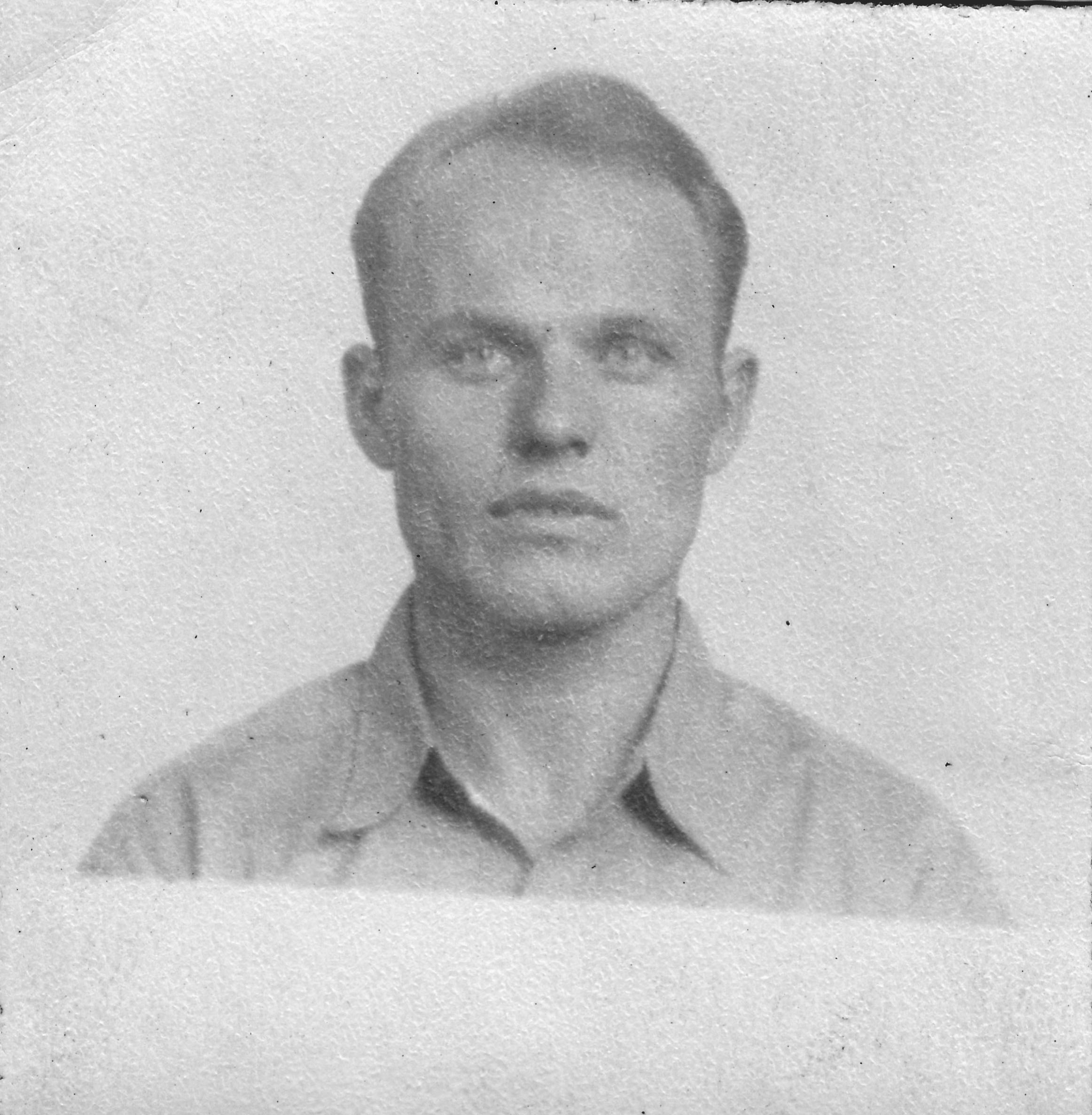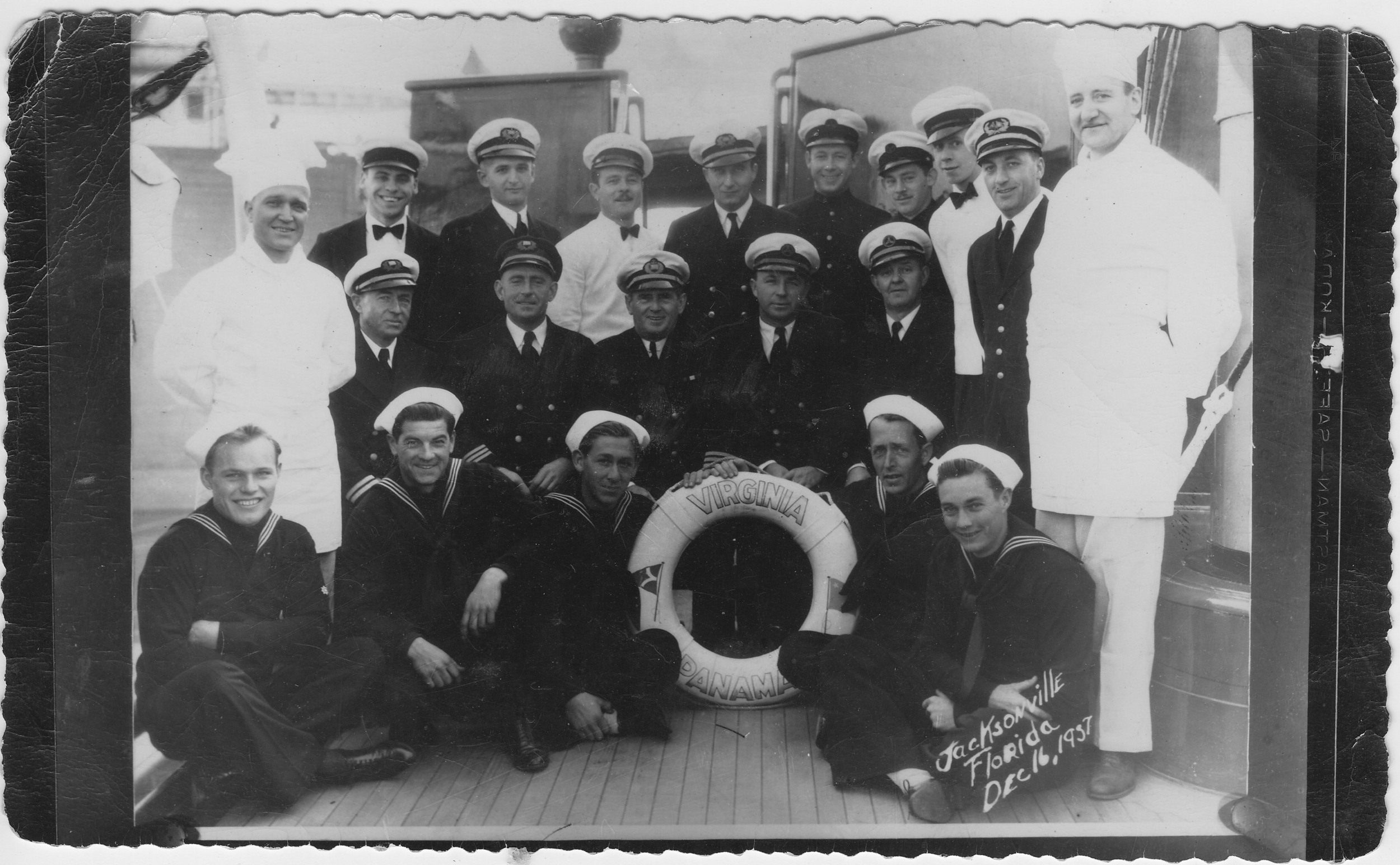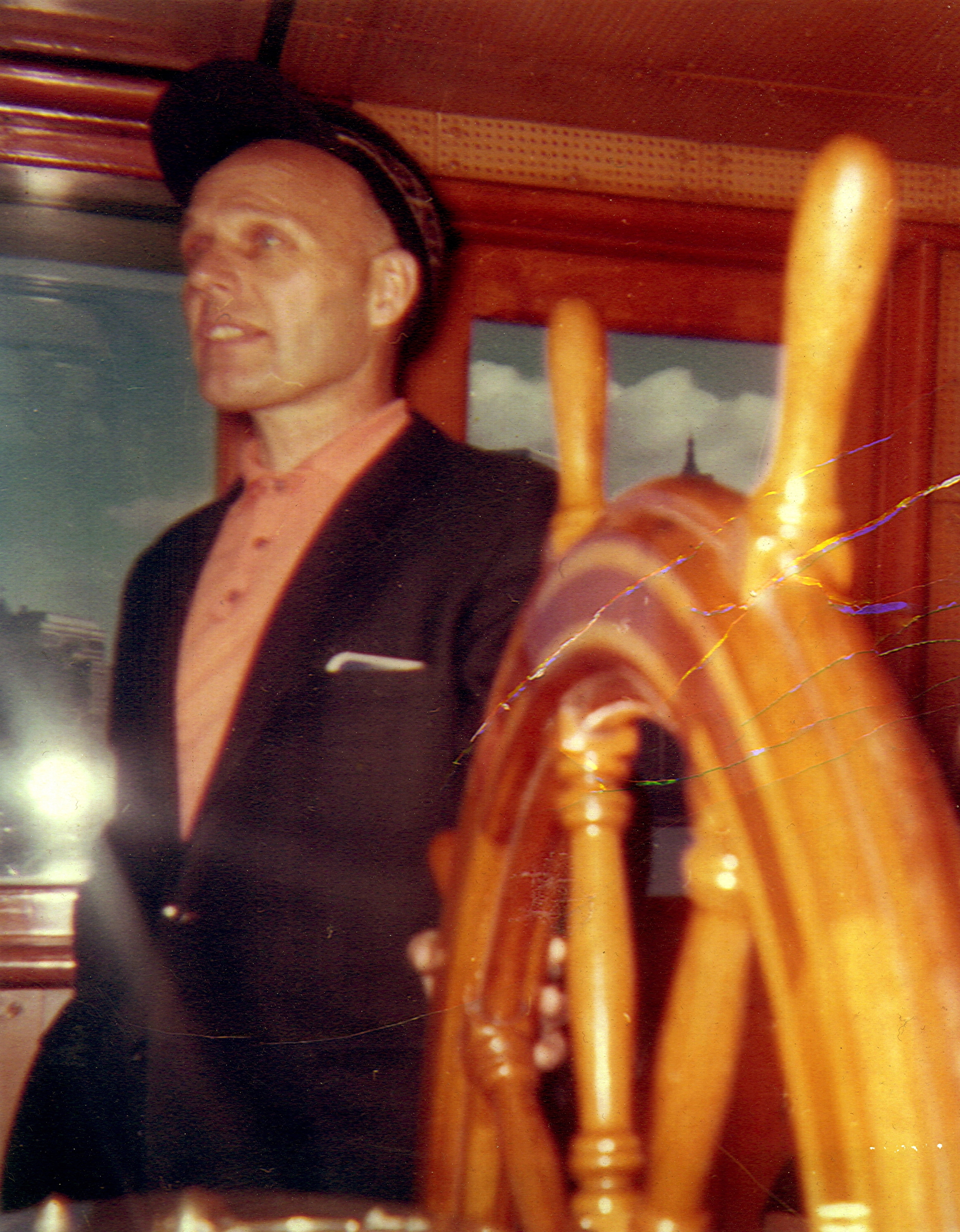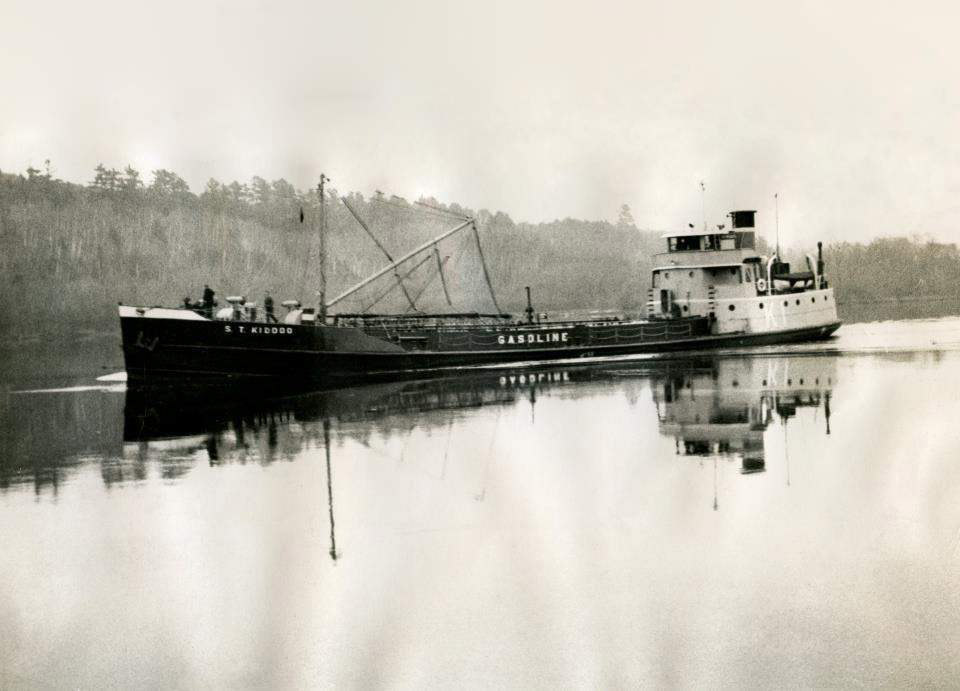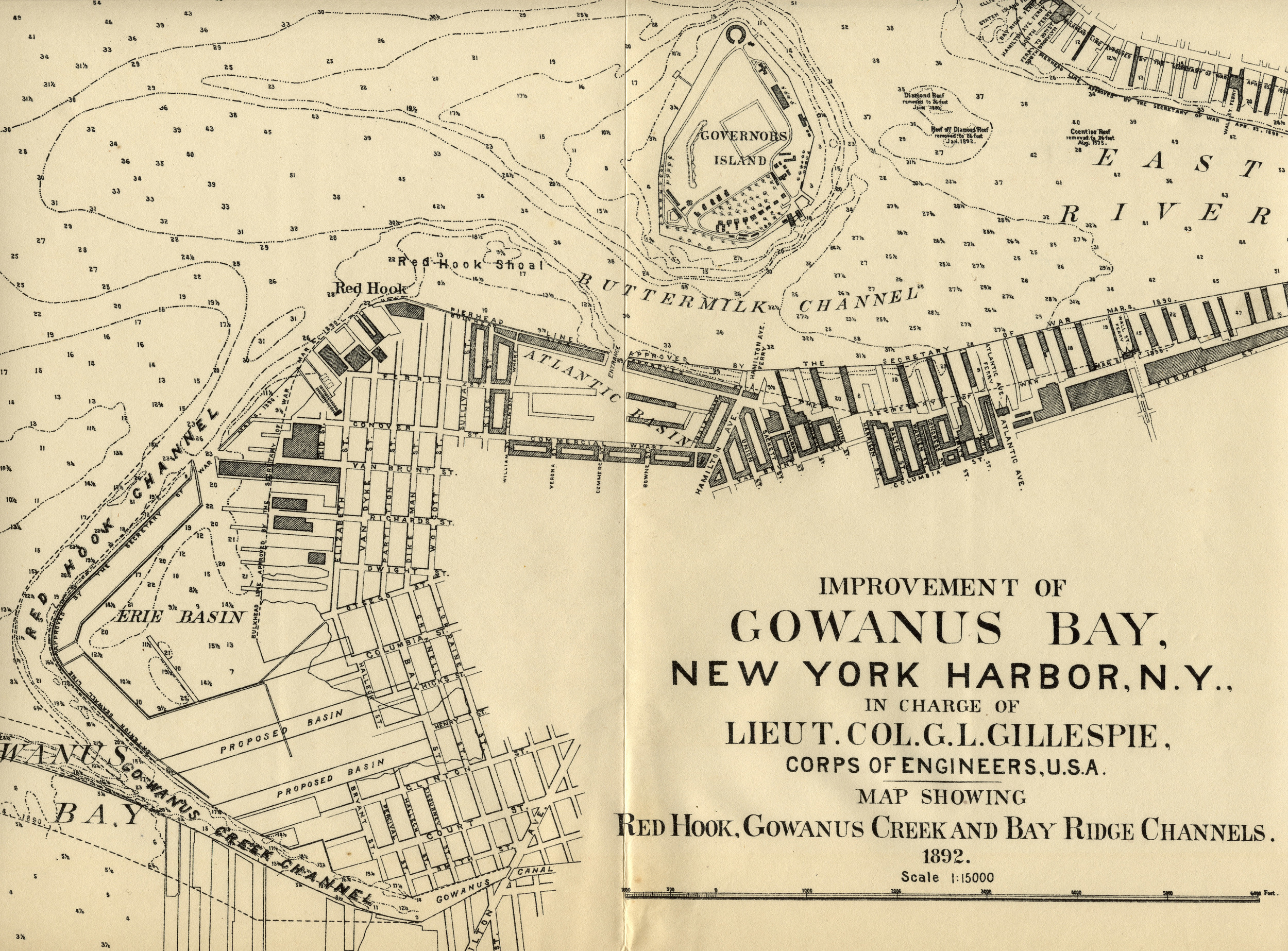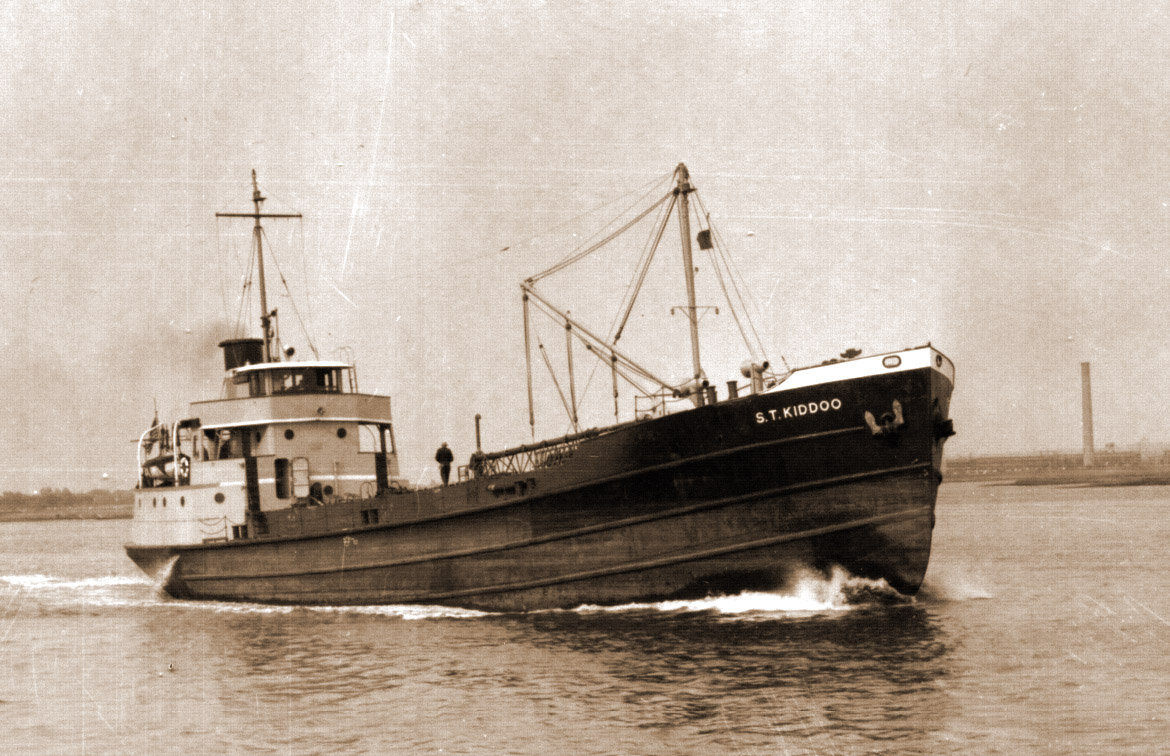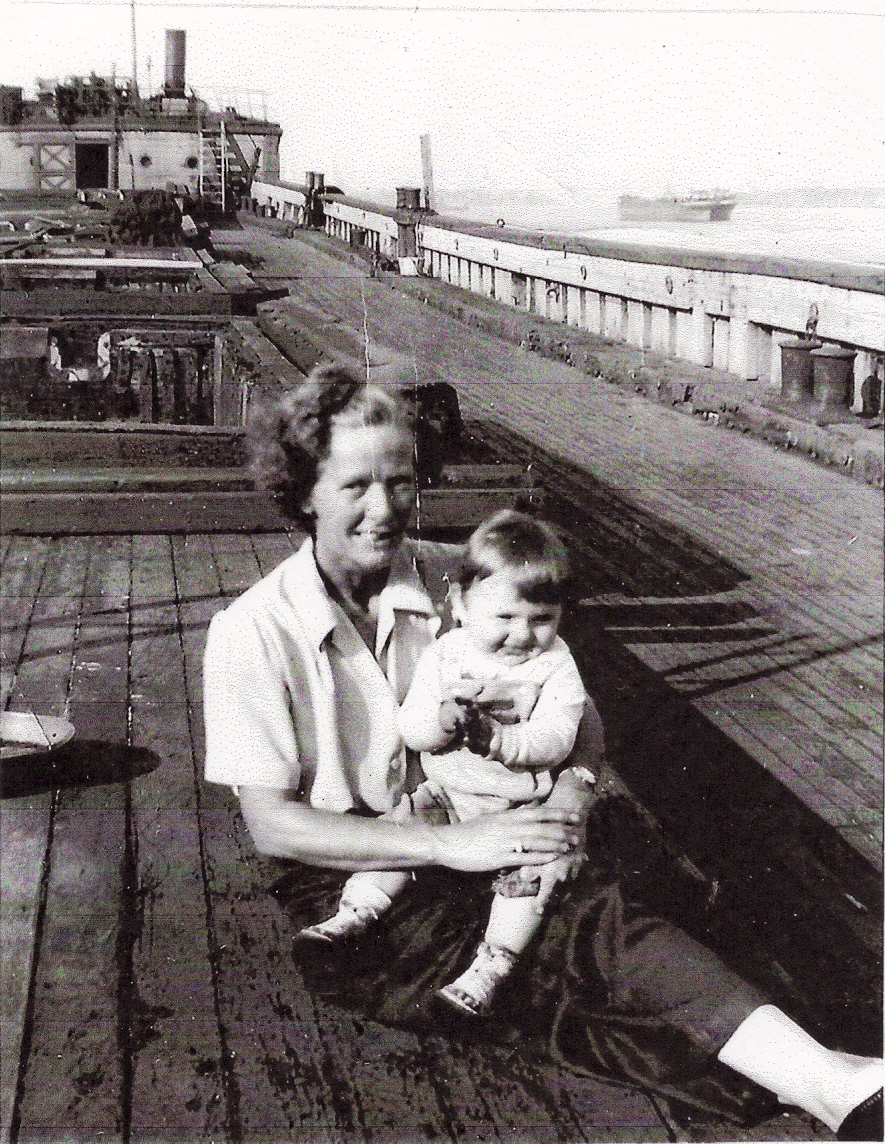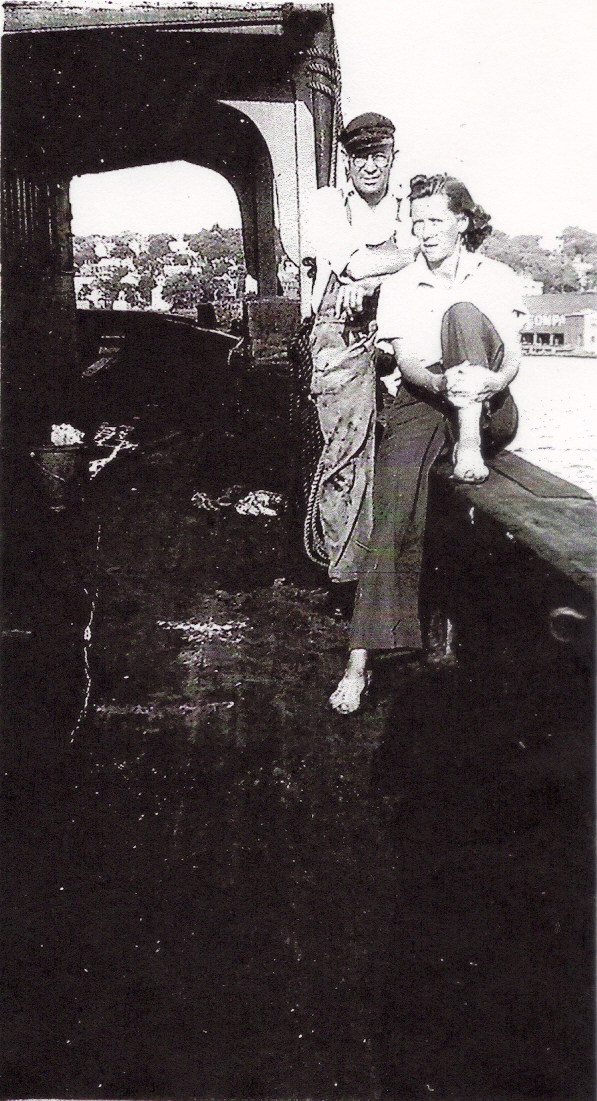eWaterStories experiences selected by PortSide for the pandemic era
/Sunset seen from the deck of portside’s flagship, the mary a. whalen, in red hook, brooklyn
For you! Specially selected #eWaterStories, virtual maritime and marine life programs for the COVID19 period, to educate and entertain while we all do our part at #socialdistancing and staying inside to flatten the curve. There is an ocean of resources out there produced by a wide variety of marine science organizations, museums, aquariums and educational sites. This is a growing list of selections I made to provide programs during the coronavirus era.
I list the organization websites first, and then break out the offerings such as virtual tours, live cams, games, and educational material into their own headings.
PortSide has our own virtual museum RedHookWaterstories.org, full of oral and written histories, anecdotes, maps, photographs, and other water stories (from cats to quarantines) related to Red Hook, Brooklyn on land and water.
Please check back for updates, and if you have something good to recommend, please let me know.
Peter Rothenberg
Curator, PortSide NewYork
Index
General websites
PortSide NewYork's own offerings – some quick links
Audio
Children's Books – downloadable
Children's Books Read-a-loud (YouTube videos)
Coloring Books (with a story to tell)
Education
Games
Graphic Novellas, Comic Books and Illustrated E-books
Google Expeditions
Knots
Live Cams - Nature
Live Cams - Port Views
Live Cams - Other
On-line Collections
On-line exhibits
Photographs
Videos – Documentaries
Videos – Created for Kids - learning is fun ( just a few random ones)
Videos – Just for Fun ( just a few random ones)
Videos – Science & Sea Critters
Virtual Tours 360°
Virtual Tours (other or more than 360° tours)
Other – These don't fall into the existing categories
General websites
Australian National Maritime Museum
https://www.sea.museum/C-MORE, the Center for Microbial Oceanography: Research and Education
http://cmore.soest.hawaii.edu/education.htmIndependence Seaport Museum
The Jamaica Bay-Rockaway Parks Conservancy (JBRPC)
JOIDES Resolution. JOIDES Resolution is a research vessel that drills into the ocean floor to collect and study core samples has a range of educational material about their work and science. It is part of the International Ocean Discovery Program funded by the National Science Foundation. There is quite a lot of educational material on this site, beyond what is listed here.
https://joidesresolution.org/for-educators/Monterey Bay Aquarium
https://www.montereybayaquarium.org/for-educatorsMystic Seaport Museum
https://stories.mysticseaport.org/ New London Maritime Society
https://www.nlmaritimesociety.org/National Maritime Historical Society
https://seahistory.org/Explore lots of places not (yet) on this list
World wide Map of Museums, Programs, Historic Sites
https://seahistory.org/resources/museums-programs-historic-sites/NY Region Maritime Museum Guide
https://seahistory.org/museum-program-site-location/new-york-region/
NY Department of Environmental Conservation, Environmental Education
Has listing similar to this one, there is some overlap, but plenty different stuff to see there too. https://www.dec.ny.gov/education/119886.htmlNOAA's National Estuarine Research Reserve System - Estuary Education
https://coast.noaa.gov/estuaries/curriculum/NOAA's Office of National Marine Sanctuaries
https://sanctuaries.noaa.govOcean Exploration Trust's E/V Nautilus ocean exploration ship.
https://nautiluslive.orgRed Hook Water Stories, PortSide NewYork’s own e-museum full of histories, anecdotes, maps, photographs, oral histories and other water stories of Red Hook, Brooklyn on land and water.
redhookwaterstories.orgSchmidt Ocean Institute. In addition to their own material, they have quite a number of links to educational materials of other institutions.
https://schmidtocean.org/education/ocean-education-resources/Smithsonian National Museum of American History
https://americanhistory.si.edu/onthewater/Texas State Aquarium
https://www.texasstateaquarium.org/educate/learn-from-home-activities/The Nature Conservancy Nature Lab. Nature Lab is The Nature Conservancy's youth curriculum platform
https://www.nature.org/en-us/about-us/who-we-are/how-we-work/youth-engagement/nature-lab/?vu=naturelabThe Noble Maritime Collection
http://www.noblemaritime.org/the-noble-at-homeThe Thistle Project: An Archaeological survey of the SS THISTLEGORM, Red Sea, Egypt
https://thethistlegormproject.com/Underwater Earth and Seaview 360. Underwater Earth is an Australian organization which, among other things, is creating the world's largest underwater visual archive
https://www.underwater.earth/
PortSide NewYork's own offerings – some quick links
PortSide NewYork's African American Maritime Heritage program's website, a jumping off point for exploring the waterstories of African Americans;stories of black achievement, struggles against the sea, struggles against racism, and aspects of daily life and work. It includes short synopses and links.
PortSide NewYork's blog
redhookwaterstories.org
PortSide's virtual museum full of written and oral histories, anecdotes, maps, photographs, and other water stories (from cats to quarantines) related to Red Hook, Brooklyn on land and water. Updated often.facebook.com/portsidenewyork
Live streams of the sunset, from the top of the MARY A WHALEN's wheelhouse, looking out on the Atlantic Basin with the Statue of Liberty in the distance every evening starting around 7:30 by PortSide's Executive Director Carolina Salguero. These have turned into a conversation and harbor tour.Audio Tour of PortSide NewYork’s MARY A WHALEN
https://redhookwaterstories.org/items/show/1738
Audio
An Accidental Sailor Vs. the Storm of the Century
https://narratively.com/a-gloriously-inept-sailor-vs-the-storm-of-the-century/Marine Radio - New York Harbor. LIVE
The nyharborwebcam site also live streams marine radio (ship folk letting each other know where they are , where they are going, and who is there already, i.e. traffic - also pilots letting ships know how and when they will be boarding large vessels to steer them into port). Click on the letters “VHS” above the camera view to hear marine radio.
https://www.nyharborwebcam.com/
Also available (after an ad) at https://m.broadcastify.com/listen/feed/17329The Curse of the Ship of Gold – an audio story
How a brilliant scientist went from discovering a mother lode of treasure at the bottom of the sea to fleeing from authorities with suitcases full of cash. Story by Dylan Taylor-Lehman
https://narratively.com/the-curse-of-the-ship-of-gold/Pete Seeger in Concert in New York City, New York. 1969-11-07
Audio Tape Collection: American Archive Pilot Project Grant, WYSO 91.3 FM Public Radio Digital Archives
“Oh, For a life in the rolling sea” (28:00)
https://cdm17207.contentdm.oclc.org/digital/collection/WYSOProgram/id/171
https://americanarchive.org/catalog/cpb-aacip_27-tm71v5c162#at_2875.15_s“Talk to the People,” WNYC, 1942-04-19
The Sunday afternoon talks by NYC Mayor Fiorello H. La Guardia. Topics include wartime preparations, darkening the coast line: “...Another master advises that when off New York City, lights from Rockaway Beach will silhouette a ship at sea a distance of six miles off the beach... I appeal to all New Yorkers having their homes or places of business along the shore to be sure to dim their lights.' "Let us do this voluntarily, if you get what I mean."
https://americanarchive.org/catalog/cpb-aacip_80-62f7mp4x
https://www.wnyc.org/story/april-19-1942/Tugboat Strike, Jan 3, 1949, WNYC New York
Announcement that a meeting between disputing parties in the the tug boat labor dispute will take place the following day at the Labor Relations office.
https://www.wnyc.org/story/tugboat-strike/
Coloring Books (with a story to tell)
Jamaica Bay Activity Book
good for kids
http://www.jbrpc.org/s/Jamaica-Bay-Activity-Book.pdfMicrobial Mysteries Coloring Book
“a ‘behind-the-scenes’ look into the Solving Microbial Mysteries with Autonomous Technology expedition aboard the R/V Falkor.” science ship in the form of a sketches to be colored in, with some real science mixed in. [Science part not aimed at young kids]
https://schmidtocean.org/wp-content/uploads/Microbial-Mysteries_-In-Situ-In-The-OMZ-Coloring-Book.pdfMappin’ the Floor, color-it-your-self version. Lucy Bellwood's comic book introduction to the work of scientists mapping the ocean's floor aboard the Schmidt Ocean Institute's R/V FALKOR, a state-of-the-art oceanographic research vessel. A colored version is also available.
https://schmidtocean.org/wp-content/uploads/MappinTheFloor-complete.pdf30 days in the Gulf Stream in a Yellow Submarine – In 1969 the submarine Ben Franklin drifted in the Gulf Stream from Florida to Nova Scotia taking measurements as they went. Aside from the ocean research, NASA was interested in the effects of a long mission in a capsule. By the Post and Courier.
https://www.postandcourier.com/days-in-the-gulf-stream-a-coloring-book/pdf_6ea5bd5c-b131-11e8-bb80-27571b5df5bc.html Water Cycle Interactive Coloring Book. Save Our Water website. On line coloring book – no paper needed. https://saveourwater.com/water-smart-kids/interactive-coloring-book
Children's Books – downloadable
JOIDES Resolution offerings:
https://joidesresolution.org/for-educators/node2998/Where Wild Microbes Grow: A Free Children’s Book
https://joidesresolution.org/activities/where-wild-microbes-grow/Into the Crater of Doom introduces kids to the asteroid impact 66 million years ago that caused dinosaurs and many other species to go extinct.
https://joidesresolution.org/activities/into-the-crater-of-doom/Uncovering Earth's Secrets: Science and Adventure on the JOIDES Resolution.
https://joidesresolution.org/activities/uncovering-earths-secrets-book/Iceberg of Antarctica. Topics covered: climate change, microfossils, science ship JOIDES Resolution.
https://joidesresolution.org/activities/iceberg-of-antarctica-book/
Children's Books Read-a-loud (YouTube videos)
Brilliant Boats by Tony Mitton & Ant Parker
https://www.youtube.com/watch?v=KK7Au1u-_xgClark the Shark: Too Many Treats | Read Aloud Storytime (read by author)
https://www.youtube.com/watch?v=gys2buANKWkClumsy Crab - Story Time with Mrs. Demers
https://www.youtube.com/watch?v=2Vcw1mik4sMCrabby & Nabby, A Tale of Two Blue Crabs, read by author Suzanne Tate
https://www.youtube.com/watch?v=fZy3UMEsevkDanny & Daisy, A Tale of a Dolphin Duo, read by author Suzanne Tate
https://www.youtube.com/watch?v=lkv9zwp6F3cElla Sets Sail
https://www.youtube.com/watch?v=025ndGzv4SEFamous Seaweed Soup
https://www.youtube.com/watch?v=oojFygHU3E8Fish is Fish by Leo Lionni
https://www.youtube.com/watch?v=vy-VQUQMUEIHarry Horseshoe Crab-A Tale of Crawly Creatures
https://www.youtube.com/watch?v=_z16usVAExwJoshua by the Sea
https://www.youtube.com/watch?v=kR71m-vUdOYJulian is a Mermaid by Jessica Love
https://www.youtube.com/watch?v=4Y1E62CxRtMLittle Toot (1939 tugboat book)
https://www.youtube.com/watch?v=7eVnn050Ycs
musical version
https://www.youtube.com/watch?v=TF3rsvYaZ9wMy Very Own Octopus
https://www.youtube.com/watch?v=ePdLk_pVvNQOcean Animals from Head to Tail by Stacey Roderick
https://www.youtube.com/watch?v=2g9-nvBzEIAOne Fish, Two Fish, Red Fish, Blue Fish | Dr. Seuss Raps over Dr. Dre Beats
https://www.youtube.com/watch?v=I8-EXMxufG8Over and Under the Pond read by author Kate Messner
https://www.youtube.com/watch?v=vts7rQQ8H4QPete the Cat: Pete at the Beach
https://www.youtube.com/watch?v=md_gV7eWoNwSailor Moo: Cow at Sea
https://www.youtube.com/watch?v=EJC1oDPS1N8Sam the Sea Cow
S10E03 Reading Rainbow
https://www.youtube.com/watch?v=wNV2lPJU508
Picture Books Read to Kids Aloud! Age 6-9
https://www.youtube.com/watch?v=WsJAzW6VjNESEABIRD by Holling Clancy Holling Part 1 of 7
https://www.youtube.com/watch?v=tSGfAWqPv6cSneakers, the Seaside Cat by Margaret Wise Brown
https://www.youtube.com/watch?v=7sH6_5fQLiYSomewhere in the Ocean
https://www.youtube.com/watch?v=UZ6G_XF4RokTammy Turtle, A Tale of Saving Sea Turtles, read by author Suzanne Tate
https://www.youtube.com/watch?v=c9DZ40Nkvm0The Bravest Fish - Read Along Aloud Story Book for Children Kids
https://www.youtube.com/watch?v=x9qCa0wntIYThe Lighthouse Cat - Storytime Read Aloud
https://www.youtube.com/watch?v=uVDUNCCzltsThe Lighthouse Keeper's Cat - Give Us A Story!
https://www.youtube.com/watch?v=kSlaOU3CrtsThe Little Red Lighthouse and the Great Gray Bridge
https://www.youtube.com/watch?v=9qsBv8xInQIThe OCEAN Alphabet Book by Jerry Pallotta. Grandma Annii's Storytime
https://www.youtube.com/watch?v=8CM3PcRQ8NIThe Oyster's Secret
https://www.youtube.com/watch?v=Pi_YkEctlXcThe Rainbow Fish by Marcus Pfister, Kids Book Read Aloud
https://www.youtube.com/watch?v=Z3cmddZh6t8
Education
American Museum of Natural History’s, Ology web pages have learning, activities, videos and games for kids relating to the water.
Billion Oyster Project. In addition to their regular remote learning offerings they have started a Quarantine Ideas & Activities newsletter.
https://www.billionoysterproject.org/remote-learningIntrepid Museum, Virtual Intrepid Adventure Programs
A variety of different family-friendly programs are offered. Celebrations Aboard Intrepid (Ages 5–15) and Life Aboard! (Ages 5–15) are two examples. The programs are limited in size and require advanced registration. Se their website for calendar and details.
https://www.intrepidmuseum.org/education/intrepid-adventuresNature Lab: The Nature Conservancy's youth curriculum platform
A water related offering of theirs is How Water Works in Your Garden “By filtering rainwater and slowing the movement of water to rivers, lakes and oceans, your garden works as a mini-watershed. In this lesson, students calculate the permeable surface area of their garden and periodically measure rainfall amounts, acting as junior hydrologists.”
Watch Video| Download Teacher Guide Educator Support Video
Monterey Bay Aquarium's curriculum and resources
https://www.montereybayaquarium.org/for-educators/curriculum-and-resourcesNOAA's National Estuarine Research Reserve System - Estuary Education,
There are a lot of lesson plans here, searchable by grade, produced by estuary organizations around the country. Many links will lead to sites with even more offerings.
https://coast.noaa.gov/estuaries/curriculum/
Here are a few examplesCoastal Acidification animation
https://oceanacidification.noaa.gov/WhatWeDo/EducationOutreach.aspx#14963Combined Sewer Overflow
https://coast.noaa.gov/estuaries/videos/combined-sewer-overflow.htmlEstuary Quiz
https://coast.noaa.gov/estuaries/curriculum/quiz.html
NY Department of Environmental Conservation, Environmental Education
https://www.dec.ny.gov/education/119886.html
Here are some of what they have related to the water
Hudson River Lesson Plans
https://www.dec.ny.gov/education/25386.htmlLarge Crustaceans poster (PDF): blue crab, crayfish, white-fingered mud crab, shore shrimp, amphipod, sand shrimp
https://www.dec.ny.gov/docs/remediation_hudson_pdf/hrlpixcrusts.pdf
NYC H2O HUB
Learn about New York City’s local water ecology. NYC H2O have converted their tours to an online experience.
https://storymaps.arcgis.com/collections/8a62c7993b4f4f40b49b3ac09671ce3c?mc_cid=9d50e6f914&mc_eid=8954a69305
Here are some examples:Sea Grant: education offerings
Michigan Sea Grant:
https://www.michiganseagrant.org/educational-programs/h-o-m-e-s-at-home/
New Jersey Sea Grant Consortium : Resources for Educators
New York Sea Grant
North Carolina Sea Grant : Education Resources for At-Home Learning
https://ncseagrant.ncsu.edu/program-areas/education-training/education-resources-at-home-learning/
Steamship Historical Society of America’s Ship History Center’s website STEAMing into the Future has a good variety of educational activities for kids and adults, relating to ships.
https://shiphistory.org
https://shiphistory.org/educationHere is a sampling:
Smithonian's “On The Water” exhibit curriculum material; largely related to the children's book Keep the Lights Burning, Abbie, by Connie Roop.
https://amhistory.si.edu/ourstory/activities/water/Teaching guide to Keep the Lights Burning, Abbie, (pdf)
A guide to looking to exploring waterways with Google Earth (pdf)
A downloadable power point on Lenses and Lighthouses
Teaching guide and recipes for hard tack and swanky (pdf)
Games
2048: Microplastics Multiplied Edition, by Cafeteria Culture
http://create2048.com/game.php/?game=microplastics-multipliedCafeteria Culture worked with Red Hook's PS 15 5th grade to make the movie “Microplastic Madness”
Microplastic Madness trailer: https://vimeo.com/361115158
Be a sea searcher, observation games for K-3 by the Monterey Bay Aquarium https://www.montereybayaquarium.org/for-educators/curriculum-and-resources/games-and-activities/be-a-sea-searcher
Bubba's Tour – audio/visual tour of the JOIDES Resolution science ship and its work with questions leading to a puzzle to be solved. (Requires Flash.)
https://joidesresolution.org/activities/3317/Fossil Fun – falling fossils matching game - like Tetras. (Requires Flash.)
https://joidesresolution.org/activities/3318/Journey to the Bottom of the Sea, American Museum of Natural History interactive quiz game.
https://www.amnh.org/explore/ology/water/journey-to-the-bottom-of-the-seaKelp Forrest Game, by the Monterey Bay Aquarium
Geared for children ages eight to 11, but fun for all ages
https://www.montereybayaquarium.org/for-educators/curriculum-and-resources/games-and-activities/kelp-forest-game-and-ebookMicrobe Personality Quiz, “Which Microbe Are You?” by C-MORE
- Good for young kids -
http://cmore.soest.hawaii.edu/education/kidskorner/microbe_quiz.htmStories from the Cores
Three video games that let players act like scientists. Players study cores drilled from the ocean to uncover their secrets. How did the dinosaurs go extinct? How are microbes able to live inside rocks hundreds of feet below the seafloor? Why are bits of land plants found in deep sea cores far from shore? (interactive science education)
https://joidesresolution.org/for-educators/download-stories-from-the-core/Voyage Game, by the Australian National Maritime Museum
“An educational online game based on real convict voyages!” This is a long and involved educational adventure game, one is not likely to complete in one sitting. There is a mix of planning and thinking with periodic games requiring hand-eye coordination such as catching rats and doing laundry. The game is designed to give players a sense of what it was like making the long sail from England to Australia, with both death and dancing.
https://www.sea.museum/discover/apps-and-games/voyage-game
Graphic Novellas, Comic Books and Illustrated E-books
JOIDES Resolution has published a number of graphic e-books telling the adventures of their work in a graphic novel format. (Downloadable pdfs)
https://joidesresolution.org/multimedia/Episode 1: Tales Of The Resolution!
https://joidesresolution.org/activities/tales-1Episode 2: Re-Fit Madness
https://joidesresolution.org/activities/tales-2/Episode 3: Resolution Reloaded
https://joidesresolution.org/activities/tales-3/Episode 4: Arctic Rainforest
https://joidesresolution.org/activities/tales-4/Episode 5: Choose Your Own Tales Of The Resolution – Jobs On The JR
https://joidesresolution.org/activities/tales-5/Episode 6: In Search Of Ancient Lava Flows
https://joidesresolution.org/activities/tales-6/
Antarctic Log Comic – Expedition 379: Amundsen Sea
https://joidesresolution.org/activities/antarctic-log-comic/
Google Expeditions
Designed to viewed on a phone with VR (virtual reality) glasses using the app but can also just be used on a computer screen, or phone screen. [Google Cardboard viewers were sort of a thing in 2014 and information about on how to make them or buy them are available on line.]
https://edu.google.com/products/vr-ar/expeditions/
Google’s spreadsheet of Google Expeditions (Google doc): https://docs.google.com/spreadsheets/d/1uwWvAzAiQDueKXkxvqF6rS84oae2AU7eD8bhxzJ9SdY/edit#gid=0
Here are some marine related ones
20,000 Leagues Under the Sea Explore an artists interpretation of the underwater world created by Jules Verne in 1872.
“Join Pierre Aronnax, Conseil and Ned Land as they inadvertently embark on an underwater journey on board the submarine Nautilus commanded by the enigmatic Captain Nemo. A voyage covering 20,000 leagues in a submarine years ahead of its time, you will feel part of the action journeying through realistic underwater scenes. Jules Verne himself would surely recommend bringing his wonderful novel to life using the magic of virtual reality.”
https://poly.google.com/view/c2BA_10LmWW
Alice Austen: Early American Photographer
Dr. Doty and the Quarantine
”In the early 1890s, 500,000 immigrants per year were sailing past Clear Comfort into New York Harbor to Ellis Island. If there were signs of infectious disease on the boat, the passengers and goods abroad and the vessel had to be inspected and sanitized. In the late 1890s, Austen was asked by a Public Health Service doctor, Dr. Alvah H. Doty, to document the quarantine stations located on Hoffman and Swinburne Islands close to the Austen family home. Austen continued to travel to the islands for over a decade to document advances in technology and conditions at the quarantine stations. She processed these photographs in this darkroom.”
https://poly.google.com/view/fsGxNPolkGj
USS Midway Museum, The USS Midway was the largest Navy ship in the world for a decade after it was commissioned in 1945. She is also the longest-serving aircraft carrier of the 20th century (47 years)
https://poly.google.com/view/1u1aO9S1sYWTitanic Belfast . Stand in a spot and look around the SS Nomadic. “Built in 1911 as a luxury tender, she ferried 1st and 2nd class passengers to ocean liners moored off the French port of Cherbourg, which was too shallow to accommodate the big ships. (Her sister ship, SS Traffic, carried the 3rd class passengers.) In her lifetime, Nomadic served as a minesweeper, a tugboat, and a restaurant and nightclub. Nomadic has survived over 105 years of turbulent events to make it back to Belfast in one piece.
https://poly.google.com/view/6tjWCUFYtjK
Knots
Maybe now is a good time to learn some handy knots, knowing a few good ones can be useful and satisfying.
Animated Knots
https://www.animatedknots.comBoating knots
https://www.animatedknots.com/boating-knotsThe bowline is the go to knot for many
https://www.animatedknots.com/bowline-knotI am a fan of the midshipman's hitch
https://www.animatedknots.com/midshipmans-hitch-knot
Live Cams - Nature
Bronx Zoo/ New York Aquarium has live feeds of the Sea Lion Pool and the Aquatic Bird House, from 10– 4 pm
https://bronxzoo.com/virtual-zoo/live-camsExplore.org has A LOT of water options – each heading has many offerings – plus much more.
Orcalab Base Lookout
https://explore.org/livecams/orcas/orcalab-baseUnderwater
https://explore.org/livecams/under-the-water/pacific-aquarium-tropical-reef-cameraHomosassa Springs Underwater Manatees
https://explore.org/livecams/save-the-manatee/homosassa-springs-underwater-manateesBeluga Whales
https://explore.org/livecams/beluga-whales/beluga-boat-cam-underwater
Georgia Aquarium. Fishes, otters, jellies and more.
https://www.georgiaaquarium.org/webcam/beluga-whale-webcam/The Monterey Bay Aquarium has several amazing and memorizing live cams https://www.montereybayaquarium.org/animals/live-cams
The National Aquarium
https://aqua.org/Experience/liveThe Wild Center, Tupper Lake, NY
https://www.wildcenter.org/visit/livecamsThe water-themed one is their marsh turtle cam
https://www.wildcenter.org/visit/inside/marshturtlecam/
Live Cams - Port Views
Brooklyn Bridge
https://worldcams.tv/united-states/new-york/brooklyn-bridge New London Harbor Cam, New London Maritime Society
https://www.nlmaritimesociety.org/NLHarborcam.html
The Amistad arrived here in 1839. Electric Boat, which developed some of our earliest submarines, launched the first nuclear-powered sub, the Nautilus, here in 1954.
New York Harbor
https://www.nyharborwebcam.com/
Click on the letters “VHS” above the camera view to hear marine radio (ship folk letting each other know where they are , where they are going, and who is there already, i.e. traffic).Port Everglades
https://www.portevergladeswebcam.com/Port New York
https://www.portnywebcam.com/Port of L'Ile-Rousse, France. Watch not much happening at a ferry port.
https://worldcams.tv/france/ile-rousse/portPort of Trondheim, Norway
https://worldcams.tv/norway/trondheim/portRio 2 harbor barge, Czech Republic. (Camera is currently out of service)
https://www.mall.tv/lode-a-reky/lod-rioShelter Island. Ferry port webcam
https://worldcams.tv/united-states/shelter-island/ferryYokohama: よこはまし - 神奈川県, 日本. Japan. Time lapse images from a day to year. If you select a year the cruise liner comes and goes, if you select 30 days nothing changes but the weather.
https://www.windy.com/-Webcams/Japan/Kanagawa-Prefecture/Yokohama…
Live Cams - Other
British Virgin Islands. Beach views from various watering holes.
https://www.bvimariner.com/webcams/New Zealand. Weather Geek NZ has a whole page of web cams and daily time lapse views of the day to explore.
https://weather.geek.nz/nz_webcams.phpLots of webcams from around the world, many, but not all, are water views.
https://www.skylinewebcams.com/I liked the Boccadasse - Genoa live cam, the Dubrovnik - Fortress Revelin live cam, Santorini live cam, the Lofoten Islands - Henningsvær live cam and Paarl - South Africa live cam which had their version of duck dock someplace very green.
On-line Collections
Photographs, artifacts, sound and ephemera that one can browse through or search by keyword. Lose yourself meandering through thousands of items.
American Archive of Public Broadcasting
https://americanarchive.org/
Several videos and audio recordings from the American Archive of Public Broadcasting are on this list, categorized under subheadings. Here is one example:New York Voices, #324, Thirteen WNET. 2003
History and changes on the water front. Includes last days of the Fulton Fish Market, Kenneth Jackson opining on the changing use of the waterfront, Sal Catucci of American Stevedoring talking about theRed Hook Container Terminal (13:40), discussion of Brooklyn Bridge Park (not yet built) and the City's changing views on an industrial waterfront.
Australian National Maritime Museum
http://collections.anmm.gov.au/en/collections
Here are some examples:Postcard depicting a group portrait of a ship's crew (including ship's cat)
The stevedore rag song (sheet music cover sheet)
Photographs of AORANGI and NIAGARA ship interiors, 1924-1940
Hagley Museum, Hagley Digital Archives
Morse Dry Dock Dial, the in-house periodical for employees of the Morse Dry Dock and Repair Company of New York City (Sunset Park, Brooklyn). The digitized collection covers a period from 1919 to 1923. The covers may be of interest, even if you are not interested in the finer details of maritime history; Edward Hopper is among the artists whose illustrated covers.
Independence Seaport Museum
J. Welles Henderson Archives & Library
Search term: crew
The Mariner's Museum and Park, Newport News, Virginia
https://catalogs.marinersmuseum.org/search
Here is an example with a Red Hook connection, from the online collection of thousands of items.MIT Museum. The museum has over 40,000 items listed as nautical in their collection that can be seen on-line, mostly of ships and ships plans. [Site when visited was a bit buggy.]
https://collections.mitmuseum.org/?s=&fwp_collection_topics=nautical
Here are some examples:Mystic Seaport Museum
Digitized books, largely from the 19th century.From A Landlubber’s Log of His Voyage Around Cape Horn (1853) to Yachting in the Arctic Seas (1876.)
Objects (art, artifacts, photographs, vessels and ships plans)
Here are the ones with a Red Hook connectionDamaged hull of steamship SANTA MARTA at Robins Dry Dock, Erie Basin, Brooklyn, NY, May 13-14, 1923
Derelict barges on shore, warehouse of New York Dock Company, Red Hook Stores, ca. 1918
Damaged steamer CEPHEUS at Downing & Lawrence Shipyard, Brooklyn, NY, July 1894
French steamship MADONNA after fire, Atlantic Dock, Brooklyn, NY, June 28, 1907
Man and boy [and dog and monkey] on deck of tugboat, circa 1907
Munson Line steamship MOCCASIN sunk at Erie Basin, Brooklyn, NY, March 1920
Lighter HELEN F. ROBBINS with her load of burning cotton, Erie Basin, Brooklyn, NY, December 1891
Pumping out at dry dock, Clinton Street, Brooklyn, NY, May 14, 1924
S.S. IONA, at NY Dry Dock & Repair Co., Erie Basin, Brooklyn, NY
Schooner NELLIE BRUCE scuttled after fire in cargo of lime, Erie Basin, Brooklyn, NY, after 1882
Yacht WANDA sunk on Crane's Dry Dock, Erie Basin, Brooklyn, NY, October 25, 1899
Steamer ST. DUNSTAN afire and sunk at Erie Basin, Brooklyn, NY, January 9,1901
Steamship ALLEGHANY sunk in Erie Basin, Brooklyn, NY, April 11, 1903
Steamship GEORGE W. CLYDE and tugboat AMERICA, Erie Basin, Brooklyn, NY, March 9, 1896
Tugboat COLUMBIA partially sunk at Red Hook, Brooklyn, NY, circa 1896
Tugboat GEORGE L. GARLICK in dry dock at Downing & Lawrence, Brooklyn, NY, May 27, 1897
U.S. Army Transport INGALLS capsized and sunk on dry dock, Erie Basin, Brooklyn, NY, June 14, 1901 and this one
Wharf scene, New York, circa 1870 [Not Red Hook, but a view of shipping before completion of the Brooklyn Bridge]
New York State Archives
http://digitalcollections.archives.nysed.gov/
Here is a sample search:Erie Canal - Barge Canal construction photographs
On-line exhibits
The Ben Franklin - Grumman/Piccard PX-15 Submersible - 50th Anniversary of the Gulf Stream Drift Mission:
https://oceancolor.gsfc.nasa.gov/gallery/646/
Related video: https://svs.gsfc.nasa.gov/10849“At 8:56 P.M. (EDT) July 14, 1969, Grumman Aerospace Corporation's research submarine Ben Franklin slipped beneath the surface of the Atlantic off the coast of Palm Beach, Florida carrying a crew of six comprised of engineers, oceanographers and a former Navy captain. In addition, NASA sends along one crew member whose job it was to evaluate the use of the Ben Franklin as a space station analogue.
The Ben Franklin's mission was to investigate the secrets of the Gulf Stream as it drifted northward at depths of 600-2,000 feet; to learn the effects on humans of a long-duration, closed-environment stressful voyage; to demonstrate the engineering-operational concepts of long term submersible operation; and to conduct other scientific oceanographic studies.
This longest privately-sponsored undersea experiment of its kind ended more than 30-days and 1,444 nautical miles later, when the Franklin and its crew surfaced some 300 miles south of Halifax, Nova Scotia, at 7:58 A.M. August 14, 1969”
New London Maritime Society
https://mcguirelibrary1998.omeka.net/Remembering Ellery Thompson: Fisherman, Writer, Artist, Free Spirit, (1899-1986) An exhibition of the life and times of Ellery Franklin Thompson (1899-1986), whose writings, published and unpublished, provide first-hand glimpses into the 20th century maritime history of southeastern Connecticut.
Down to the Shore: By Steamboat from Norwich to Block Island and Back
A memoir by Gerard E. Jensen (1884-1970) of his boyhood trips at the turn of the 19th century.New London and the First Steam-Powered Atlantic Crossing
New London's unique relationship with the SS Savannah and her pioneering transatlantic voyage in 1819Old Ironsides - New London
Photographs, documents, and other resources which tell the story of the New London Custom House's connection to America's oldest commissioned warship, USS ConstitutionU.S. Maritime Service Officers School at Fort Trumbull
Career of William Douglass Alexander (1890-1949), Thames River ferry and tugboat fireman and engineer, U.S. Naval Reserve engineer, and civilian employee at the U.S. Submarine Base in his hometown of Groton, Connecticut.
The Noble Maritime Collection - Online exhibitions:
http://www.noblemaritime.org/the-noble-at-home/#exhibitions
There are several offerings such asThis is a Print, Inspired by John A. Noble’s preference for printmaking, this exhibit is organized by various methods of making prints.
http://www.noblemaritime.org/this-is-a-print-onlineShip Model Gallery
http://www.noblemaritime.org/ship-model-gallery1
Smithsonian National Museum of American History “On The Water” online exhibit
The exhibit has a lot to offer, some shortcuts are listed here but more can be found on their site.The Exhibits:
01 Living in the Atlantic World1 450–1800
02. Maritime Nation 1800–1850
03. Fishing for a Living 1840–1920
04. Inland Waterways 1820–1940
05. Ocean Crossings 1870–1969
06. Answering the Call 1917–1945
07 Modern Maritime America 1950–Present
Sea Songs
https://americanhistory.si.edu/onthewater/exhibition/3_7.html#SeaSongsOral History: “Merchant Mariners and Shipyard workers remember WWII” https://americanhistory.si.edu/onthewater/oral_histories/maritime_voices/index.htm
1944 Maria Isabel Solis Thomas Shipyard Worker – (west coast) https://americanhistory.si.edu/onthewater/oral_histories/maritime_voices/assets/audio/thomas.mp3
Environment and Society Portal
The Northwest Passage: Myth, Environment, and Resources. Virtual Exhibitions 2017, No. 1 by Elena Baldassarri
http://www.environmentandsociety.org/exhibitions/northwest-passage“Commanding, Sovereign Stream”: The Neva and the Viennese Danube in the History of Imperial Metropolitan Centers. Virtual Exhibitions 2019, No. 1 by Gertrud Haidvogl, Alexei Kraikovski, and Julia Lajus
http://www.environmentandsociety.org/exhibitions/neva-and-danube-rivers
Photographs
Amazing sea creatures, oceans and related images
Earth Is Blue web page of The National Marine Sanctuary System, has a large collection of spectacular photos.
https://sanctuaries.noaa.gov/earthisblue.htmlNASA's Ocean Color Image Gallery
https://oceancolor.gsfc.nasa.gov/gallery/C-MORE Microscopy. Images of the tiniest life in the oceans from phytoplankton to viruses [Requires Flash]
http://cmore.soest.hawaii.edu/microscopy/cmore_microscopy.html
Video - Created for Kids
I'm a Dolphin, Brown Bag Films, 2006
Commissioned by: RTE & Irish Film Board
https://www.youtube.com/watch?v=CNkA8uXZ2f8I'm A Jellyfish, Brown Bag Films, 2006
Commissioned by: RTE & Irish Film Board
https://www.youtube.com/watch?v=bvd-kLL99ssI'm an Octopus, Brown Bag Films, 2006
Commissioned by: RTE & Irish Film Board
https://www.youtube.com/watch?v=XTSIgYla8sEI'm a Seahorse, Brown Bag Films, 2006
Commissioned by: RTE & Irish Film Board
https://www.youtube.com/watch?v=lOp4bXreGmII'm a Seal, Brown Bag Films, 2006
Commissioned by: RTE & Irish Film Board
https://www.youtube.com/watch?v=3yA1YLvsH50I'm a Shark, Brown Bag Films, 2006
Commissioned by: RTE & Irish Film Board
https://www.youtube.com/watch?v=tcS6h6JRBvUI'm a Stingray, Brown Bag Films, 2006
Commissioned by: RTE & Irish Film Board
https://www.youtube.com/watch?v=Uw5jwwfJB1gI'm a Whale, Brown Bag Films, 2006
Commissioned by: RTE & Irish Film Board
https://www.youtube.com/watch?v=s1PEzOk1Q7c
Video - Science & Sea Critters
This list is just a sampling, mostly from marine research institutions and aquariums
(see also ‘Live Cams’ and ‘Video - Documentaries” ) .
Americans at Work (ca. 1959), AFL-CIO Posted on NYU Preservation YouTube channel
An episode of the documentary series Americans at Work, produced by Norwood Studios for the AFL-CIO.
Features the jobs aboard the SS United States.https://www.youtube.com/watch?v=nVByEVakm3A&feature=youtu.be&mc_cid=7ac6d0e550&mc_eid=48691e2a2e
Earth Is Blue. The National Marine Sanctuary System, has a collection of noteworthy videos. Some have people talking and explaining things others are just underwater views with captions.
https://sanctuaries.noaa.gov/earthisblue.htmlI liked the one about Hawaiian green sea turtle.
https://sanctuaries.noaa.gov/earthisblue/wk269-green-sea-turtle.html
C-MORE, the Center for Microbial Oceanography: Research and Education, has a kid friendly animated video about micro-organisms in the oceans, available in English, ‘Ōlelo Hawai‘i, Español, Italiano, Français, and Português!
http://cmore.soest.hawaii.edu/education/animation.htmNautilus, research vessel of the Ocean Exploration Trust
https://nautiluslive.org/photos-videosNew York City’s Oldest Inhabitants: Horseshoe Crabs in Jamaica Bay. Jamaica Bay-Rockaway Parks Conservancy
Plankton! Dr. Richard Kirby (@PlanktonPundit) is posting a series of 32 weekly, short videos narrated by David Attenborough to introduce this remarkable world of microscopic life on Twitter. Check in each week to see more fascinating microscopic life
https://twitter.com/PlanktonPundit
https://twitter.com/PlanktonPundit/status/1239966980532080640?s=20Texas State Aquarium's recorded streams (check their site for schedule of live ones)
https://www.texasstateaquarium.org/educate/learn-from-home-activities/free-aquavision-series-recordings/I liked the one about Invertebrates
https://www.facebook.com/TXStateAquarium/videos/252414132461483/and Flamingos
https://www.facebook.com/TXStateAquarium/videos/234389507698875/
Videos – Documentaries
After the Fire, It's Happening, Oregon Public Broadcasting, 1967 - “Here's a duffy little tugboat”
Includes a short segment on moving a raft of logs (8:30). [Red Hook was once a destination for such log rafts.]
“Here's a duffy little tugboat. A rugged little machine built out of solid steel, has a powerful engine and the operator on it is very much like a cowboy rounding up cattle as he pushes and shows and noses these logs away from the point where they're dropped into the water into the rafting area. There are some rather skilled workers walk around with their calked boots on top of these logs and push them into the arrangement that they would like to have.https://americanarchive.org/catalog/cpb-aacip_153-91fj71x1#at_575.759_s
American Fisheries, Telemark Films, 2008
“Explores both the transformation of the living ocean and the embattled fishing industry. Bringing to light one of the most significant environmental disasters in history, it nevertheless raises hope for the future.
Around Cape Horn, 1929
https://www.youtube.com/watch?time_continue=114&v=9tuTKhqWZso&feature=emb_logo
On the Peking – Dramatic footage.
Around the World in a Square Rigged Ship, 1939
Outward from Copenhagen to Australia by way of Cape of good hope in 91 days and returning via Cape Horn to England in 98 days. Four masted ship PASSAT
https://www.youtube.com/watch?v=96cRjLkIKlEBlack Journal, WNET New York Public Television. 1969
Includes a section on blacks working in a shipyard in New Orleans
https://americanarchive.org/catalog/cpb-aacip_512-7659c6sv19
Ferryboats of the Connecticut River, Telemark Films, 2017
The history, heritage, controversy and uncertain future of the last remaining ferryboats on the Connecticut River.
Filter Feeders. A look at the oyster restoration movement in New York City, as its concerned citizens work together to improve the water quality of New York Harbor and Flushing Bay. Made in 5 days concept to finish for the Project Earth Documentary Challenge hosted by The Audience Awards and Fusion Network.
https://vimeo.com/183121528Following the Seas, Journeyman Pictures, 2017
Bob and Nancy Griffith made twenty ocean voyages over two decades, fulfilling a dream of freedom and adventure in their 53-foot sailboat
https://vimeo.com/ondemand/followingseasHistory of Tugboats
Late 1990s documentary
https://youtu.be/vux2zpwawMULamu New Year’s Dhow Race, Kenya
“Every January 1, on the island of Lamu off the Kenyan coast, crews of local watermen gather on Shela Beach for the most prestigious race of the year. The traditional Arab dhows, unchanged for centuries, are made by hand from local mangrove wood and fabric.”
https://vimeo.com/156870692?fbclid=IwAR0VIWun4ZxIrkFrOCF7iFnaDir5Mj7jfvbTKJSfydQbAn6l9ZTrxWuBuwM
Lightship Overfalls (6:40)
A visitor's tour of the Lighship OVERFALLS
“Lightships were permanently stationed at fixed locations off the coast where lighthouses could not be located. GPS has made them obsolete and none remain in service. When I was young I fished with my father near Scotland Lightship outside New York Harbor. This is an inside tour of one such ship.”
Microplastic Madness (trailer)
Cafeteria Culture worked with Red Hook's PS 15 5th grade to make the movie, PortSide’s Carolina Salguero has a cameo.
https://vimeo.com/361115158New York in the mid 1930's in Color!
Compilation that includes several harbor views, including the SS Normandie and RMS Queen Mary
https://www.youtube.com/watch?v=ZpXnEvW0XD0New York Voices, #302, Thirteen WNET. 2002 “Is Red Hook, Brooklyn the New Bohemia?”
Starts off with Sunny, Greg O'Connell, Nick FeFonte,
New York Voices, #324, Thirteen WNET. 2003
History and changes on the water front. Includes last days of the Fulton Fish Market, Kenneth Jackson opining on the changing use of the waterfront, Sal Catucci of American Stevedoring talking about theRed Hook Container Terminal (13:40), discussion of Brooklyn Bridge Park (not yet built) and the City's changing views on an industrial waterfront.
New York Voices, #502, Thirteen WNET. 2005
Topics include the rezoning of a major portion of North Brooklyn's old industrial waterfront and Hidden Harbor Tours – with some footage of Erie Basin before Ikea (12:40).
https://americanarchive.org/catalog/cpb-aacip_75-72p5j143#at_1151.49_s
Replacing Z-Drives Onboard the Coast Guard Cutter BARBARA MABRITY, 2013
Coast Guard Industrial Production Facility New Orleans renews two thirteen-ton Z-drive propulsion units onboard the Coast Guard Cutter Barbara Mabrity at their dockside facilities near New Orleans East, March 11, 2013. The Barbara Mabrity, a 175-foot buoy-tender, has since returned to their home port in Mobile, Ala
Saving Jamaica Bay – THIS IS A LIMITED TIME NO COST OFFER
Watch the award-winning documentary, Saving Jamaica Bay. Follow the residents of Jamaica Bay as they battle against government and natural disasters to protect the rich ecosystem of the bay. http://www.jbrpc.org/video Worksheet for students
https://drive.google.com/open?id=1AhTz7lJgvYOs0slyYNfcPMtqQfWXAKn2G_HlQ2OkAEcSea Rescue. Full length documentary
https://youtu.be/Wa1NrfNQxWMShipyard Tools Tour, Mystic Seaport
https://stories.mysticseaport.org/shipyard-tools-tour-digital-museum/Sludge, The Robert MacNeil Report, 1976
https://americanarchive.org/catalog/cpb-aacip_507-9c6rx94090#at_904.679_sTanker Turning on the KVK (4:19)
McAllister Tugs turning an oil tanker from the berth at IMTT Bayonne NJ and out to sea.
The Charles W. Morgan, Telemark Films, 2014
Story about America’s last wooden whale ship and the incredible saga of the first global industry dominated by America.The Fight for Maritime Unity, National Maritime Union ca. 1947.
NYU Preservation YouTube channel
Starts with an introduction by the head of the National Maritime Union, listing the goals of the union and a call for unity among all the unions in the industry. References to the merchant marines during WWII; longshoremen loading bulk cargo; chipping, scrapping and painting; heroes yesterday, bums today, the broken strike of 1921; “getting my coffee and doughnuts and praying in the mission”; “shipping crimps” (racketeers who controlled access to shipping jobs, often operated out of rooming houses – the seaman often ended up with a job but no pay to keep at the end of his stint); the shape up “a nightmare of intimidation and insecurity”; industrial unionism; 1934 West Coast waterfront strike; Marine Federation of the Pacific; victory; rotary hiring system; the need for greater unity to maintain and expand gains. Music by Pete Seeger and Joe Jaffe,https://www.youtube.com/watch?v=2XIthhMpDc0&feature=youtu.be&mc_cid=7ac6d0e550&mc_eid=48691e2a2e
The Old Tugboat That Still Can, NYC Lens (Columbia University) ca. 2012
“The only thing that's changed about the 54-year-old steel tug Thornton Bros. is the crew that guides her through the choppy waters of New York Harbor”.The Real McCoy, Telemark Films (56 minutes)
The story of Bill McCoy, the pioneer rum runner of the Prohibition era, who fuelled the Roaring Twenties by transporting over 2 million bottles of "un-cut" alcohol to the Speakeasies of New York. McCoy never broke the law or diluted his alcohol, earning the name “The Real McCoy.” - Winner of 5 Emmy® Awards.
The Revolutionary River, Telemark Films, 2009
The story of the Schuylkill River National and State Heritage Area, known as “The Revolutionary River” due to its involvement in the American Revolution, Industrial Revolution and Environmental Revolution.
The Salvage Prince, 1979 (22:22)
“This is a documentary short filmed in 1979 about my parents, Jock, and the late Suzanna Brandis. I was told it was unavailable for purchase after so many years, so I wanted to share it with friends and family. Three intrepid individuals undertake the restoration of an old tugboat destined for the scrapyard. Through great inventiveness, they slowly rebuild it from recycled and scavenged materials.
From a rusted hulk, it becomes a home, albeit without the luxuries. This documentary is as much an account of their life on and around the tug as a lyrical record of how they restored its battered hide.”
Timelapse videos of wharves, beaches and containerports by Keith Loutit, Sydney Australia
Bathtub II, 2008
Bathtub III, 2008
Bathtub V, 2009
https://vimeo.com/5137183The North Wind Blew South, 2008
Traditions: Curtis Creek Ship Graveyard, Human Being Productions.(1:48)
Archaeologist documenting a ship graveyard in Maryland
https://vimeo.com/307756699Traditions: Tugboats On The Harbor. Human Being Productions.
“Drinking a beer at Ó Flynn’s on Hanover Street is where we met Captain Mark Stephen Rooney of McAllister Towing of Baltimore. There, he started to tell us all about his life growing up near the Port of Baltimore and the path that led him to becoming a Baltimore Tugboat Captain.”
Tugs. By Jessica Edwards, Narratively, 2011
Profile of Millers Launch, includes footage of the annual Tugboat Race
“The waterways are the city's sixth borough, with history, industry and recreation that are largely overlooked by most New Yorkers. Profiling the humble tugboat was my way of showcasing this unheralded part of the city.”
https://narratively.com/tugs/ and https://vimeo.com/50619799US Army Divers’ School, 1957
https://vimeo.com/408430168Using the Standard Deep Sea Diving Outfit - US Navy Training Film MN-9915c, 1966
Workhorses of the Harbor, ca. 1940
Tug dispatchers in NY 1940s
https://vimeo.com/113807700Yacht Building; Maine Public Broadcasting, American Archive of Public Broadcasting, 1983
The making of a fiberglass yacht
Video - Just for Fun (just a few random ones)
Callahead Nautical Themed Video Intro
Mutiny on the Bounty with Captain Ringo Bligh, The Beatles (cartoon) 1962
Silly cartoon in which Ringo dreams he is Captain Bligh, and the Beatles sing “Chains”
https://www.youtube.com/watch?v=tE6aJp0EIW4Octapodi (cartoon), 2008
Octopus, short animation film, award winning. Not science.
http://www.oktapodi.comYellow Submarine, The Beatles
The song, not the whole movie, but using the art.
https://www.youtube.com/watch?v=m2uTFF_3MaA
Virtual Tours 360°
These tours allow one to look around in all directions. Some have points to click on for more information while others are just unguided explorations. They can be viewed on a computer screen or on a phone, some with differing effects. [Also see the related Google Expeditions section.]
S.S. Thistlegorm. Tour the wreck of this ship that sunk in the Red Sea.
This video was captured and produced as part of The Thistlegorm Project, an initiative by Nottingham University, An Shams University and Alexandria University, funded by the British Council and Newton Fund.
https://thethistlegormproject.com/360-underwater-video/Virtual dive with sea lions in Channel Islands National Marine Sanctuary
One of the narrated offerings of NOAA's Office of National Marine Sanctuaries Virtual Dives website.
https://sanctuaries.noaa.gov/vr/
https://sanctuaries.noaa.gov/vr/channel-islands/virtual-dive-with-sea-lions.htmlJOIDES Resolution Research Vessel Tours
https://joidesresolution.org/about-the-jr/jr-vessel-tour/
See where the ship is now with MarineTraffic.comA virtual tour of a replica of James Cook's HMB Endeavor, owned by the Australian National Maritime Museum. 360 degree views of the ship and seaport from numerous vantage points within and without. Clickable points for more information and a virtual tour guide pops up at various locations; by the mast she talks about lightning strikes and exploding masts.
https://www.sea.museum/anmm_files/VirtualEndeavour/Virtual-Endeavour.htmlStan Tug 1907, a model of tug built by the Netherlands based, Damen Shipyards.
http://virtualtours.damen.com/damen-stu1907/stu1907.htmlMaersk Inventor, an offshore support vessel. 360 degree walk through. No descriptions.
https://avcimmedia.com/MaerskInventorWalkthrough/
See where it is now with MarineTraffic.comNourish: A 360° Video Poem ( Baltic Sea), an Environment and Society offering
http://www.environmentandsociety.org/exhibitions/360o-visual-journey/nourish-360deg-video-poem-baltic-seaNoble's Houseboat Studio - The Noble Maritime Collection
http://www.noblemaritime.org/houseboat-studioRobbins Reef Lighthouse - The Noble Maritime Collection
Salt Symbiosis on the Black Sea (Bulgaria), an Environment and Society offering.
http://www.environmentandsociety.org/exhibitions/360o-visual-journey/salt-symbiosis-black-sea-bulgaria
Virtual Tours (other or more than 360° tours)
Google Earth – the World's Oceans
This is self-described as “Street View” for the oceans. Various spots around the globe with e underwater places one can move around in. https://earth.google.com/web/@1.88301841,-46.619023,-1114.05572934a,46340242.7790928d,35y,0.0000003h,0.00001646t,0r/data=Ci4SLBIgNjZlNzQ1NjM3OGMwMTFlOGJmMTZhMTM2MjYyMmZhYjAiCG92ZXJ2aWV3
Virtual Erie Canal, Tugster: A Waterblog
scenes from the sixth boro and gallivants beyond by any and all the crew
”My information and photos result from working on the Canal for five of the past six years, returning there with a camera and drone in the off season, and lots of reading and conversation, all making an ongoing accretion of familiarity.” https://tugster.wordpress.com/virtual-canal-guide/
Other – These don't fall into the existing categories
Boat Courses – learn proper and safe boating. National Association of State Boating Law Administrators
https://www.nasbla.org/education/taking-a-boat-course“Bizarre Spinosaurus makes history as first known swimming dinosaur”
National Geographic, April 29, 2020A newfound fossil tail from this giant predator stretches our understanding of how—and where—dinosaurs lived.
Build Your Own Olympia! 1896 paper cut out to make at home.
Independence Seaport Museum
https://phillyseaport.org/images/Education/olympia%20model%20kit.pdfErnst Haeckel, Kunst-Formen der Natur (Art Forms in Nature) 1899
The drawings in Ernst Haeckel's Kunst-Formen der Natur inspired early 20th-century art, architecture, and design particularly the Art Nouveau movement. His work brings science and art together. The Bryozoa on plate 23 is worth seeing, but then it all is.
https://archive.org/details/KunstformenDerNaturErnstHaeckel/page/n23/mode/2upHow a Nuclear Submarine Officer Learned to Live in Tight Quarters: You get comfortable being uncomfortable.
By Steve Weiner April 9, 2020
http://nautil.us/issue/84/outbreak/how-a-nuclear-submarine-officer-learned-to-live-in-tight-quarters?utm_source=pocket-newtabHudson River Sloop Clearwater has started making YouTube educational videos during the Covid19 shutdown. (Told more are on the way.)
https://www.youtube.com/channel/UCrwbzv9MBhRjOvx1rsjzOcQMarineTraffic - the world’s leading provider of ship tracking and maritime intelligence. Membership is required to get specifics of ships, but a lot of information is freely available. Recommend looking at the “Live Map.” A great way to get a perspective on global shipping, or just have fun moving around the oceans and clicking onicons of random ships to see who they are.
https://www.marinetraffic.com/[Marine Traffic generously provides ship tracking information to PortSide NewYork's e-musuem RedHookWaterstories.org, which seamlessly explores the neighborhood’s land and water.}
NASA's Ocean Data – for academics or academically minded (or just good to look at).
https://earthdata.nasa.gov/learn/discipline/oceanNASA Scientific Visualization Studio
Ocean Color Image Gallery link: https://svs.gsfc.nasa.gov/search/?search=gene+feldman&sort_by=relevanceNASA's World View – for academics or academically minded (or just good to look at). Visually explore the past and the present of this dynamic planet from a satellite's perspective. See, for example, glaciers and hurricanes. https://worldview.earthdata.nasa.gov/
Sea-Fever blog
Exploring maritime culture, history and heritage. The blog goes back over 10 years and includes links to many interesting maritime videos (most of the links still work, too).Thirty-six Thousand Feet Under the Sea: The explorers who set one of the last meaningful records on earth.
By Ben Taub. Photographs by Paolo Pellegrin. The New Yorker, May 10, 2020
https://www.newyorker.com/magazine/2020/05/18/thirty-six-thousand-feet-under-the-seaWhen A Flu Reined In New York, April 28, 2020 New York State Parks
https://nystateparks.blog/2020/04/28/when-a-flu-reined-in-new-york…
